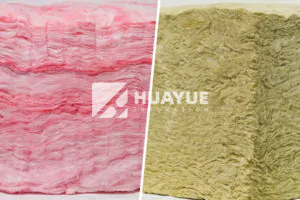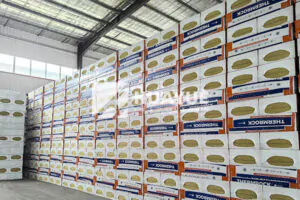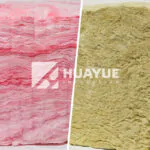Mineral Wool Ceiling: Is It the Right Solution for Your Needs?
Many people look for safer, longer-lasting options when installing ceiling insulation, but the details can be unclear and confusing.
Mineral wool ceiling boards are highly effective for sound absorption and thermal insulation, making them a popular choice for commercial and residential buildings. Their non-combustible nature adds a safety advantage over many traditional insulation options.

When I worked on office renovations, I wanted ceiling panels that would reduce noise while also keeping energy bills in check. Mineral wool ceiling tiles are engineered to help control sound, resist fire, and prevent heat loss. These benefits make mineral wool an attractive option, especially for schools, hospitals, offices, and homes. If you have ever stood in a room with mineral wool ceilings, you can tell right away how much quieter and more comfortable the space feels. Let’s look closer at how mineral wool compares to other ceiling insulation options.
Can rock wool be used in ceilings?
Improving ceiling insulation is key to controlling sound and conserving energy, and many wonder if rock wool is a good fit.
Rock wool is widely used for ceilings because it is fire-resistant, sound absorbing, and offers excellent thermal insulation. You will find it in ceiling panels for suspended ceilings, acoustics, and safety improvements.

Rock wool, which is a type of mineral wool, gives ceilings unique properties. Because it is made from natural volcanic rock, it is non-combustible and maintains its shape and strength when exposed to high temperatures. In my own projects, I have chosen rock wool panels for critical spaces like mechanical rooms and auditoriums, where fire safety and sound control matter most.
The sound absorption rates of rock wool tiles are impressive compared to common fiberglass or foam solutions. Here is a table that compares some important features:
| Material | Fire Resistance | Sound Absorption | Moisture Resistance | Durability |
|---|---|---|---|---|
| Rock Wool | Excellent | High | Moderate | High |
| Fiberglass | Good | Moderate | Low | Moderate |
| Foam | Poor | Low | Low | Poor |
Rock wool ceiling insulation helps rooms stay quieter and more energy efficient. It is ideal for places where regulations demand high fire safety and low noise levels. Rock wool also traps less moisture than most organic materials. This reduces problems like mold, which is another reason I keep recommending it for building projects.
What are the disadvantages of mineral wool?
While mineral wool offers many benefits, it is important to understand its limitations before choosing it for your ceiling.
Mineral wool can be more costly, may irritate skin during installation, and sometimes sheds fibers into the air. It also tends to absorb water if not properly protected.
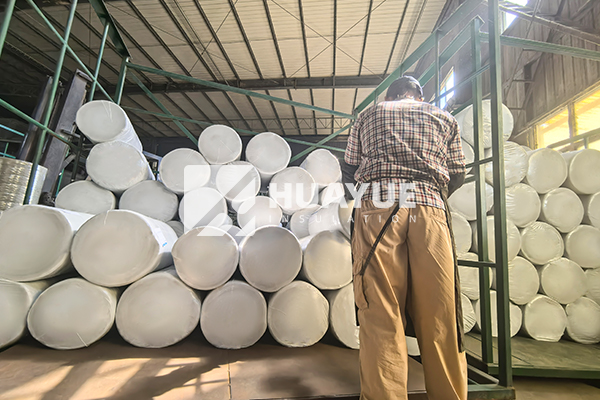
I have faced several challenges when working with mineral wool. The first issue is cost. Mineral wool panels are usually more expensive than basic fiberglass panels. This can put pressure on the project budget, especially for larger commercial jobs.
Another issue is handling. The tiny fibers in mineral wool can make your hands itch and irritate your eyes or throat if you do not wear protective gear. On one job, installers had to wear long sleeves and respirators the whole day, which slowed down progress.
Disintegration in moist conditions is also a concern. If there is a water leak above the ceiling, mineral wool can lose its insulation power and become a breeding ground for mold. Protecting the insulation with vapor barriers or water-resistant finishes helps, but adds cost and complexity.
Here is a quick comparison of downsides:
| Disadvantage | Mineral Wool | Fiberglass | Foam |
|---|---|---|---|
| Cost | Higher | Moderate | Lowest |
| Irritation | High | Moderate | Low |
| Moisture Sensitivity | Moderate | High | High |
| Fiber Shedding | Yes | Yes | No |
So while mineral wool remains effective and safe in dry, controlled settings, you’ll need to weigh these challenges against the advantages.
Does old mineral wool have asbestos?
Concerns about asbestos in older insulation have people worried about safety and health risks during renovation.
Most old mineral wool products do not contain asbestos, but some ceiling panels made before the 1980s may have asbestos if combined with other materials. Always get suspected panels tested before disturbing them.
When I help clients update old offices, the first step is knowing exactly what materials are present. Mineral wool itself is manufactured from natural minerals and does not need asbestos for performance. The risk comes when it is used alongside other materials that could contain asbestos, especially in ceiling tiles or a composite panel.
If you have an older building from before 1990, look for markings or consult past records. When these are not available, testing the material is the safest route before doing any demolition or replacement. Removal should be done only by certified professionals with full protective gear. This ensures everyone stays safe, and prevents hazardous fibers from getting into the air.
Here is an easy guide to checking for asbestos risk:
| Building Age | Mineral Wool Alone | Composite Panels | Action Needed |
|---|---|---|---|
| Pre-1980 | Usually Safe | May Contain | Test Before Work |
| 1980-2000 | Safe | Possibly Safe | Check Records |
| Post-2000 | Safe | Safe | No Concern |
So, the bottom line: mineral wool by itself is almost always asbestos-free, but always check if you suspect mixed materials.
Do rodents like mineral wool insulation?
Many people worry about animals nesting in ceiling insulation and wonder if mineral wool attracts rodents.
Rodents do not like mineral wool insulation because it is dense, dry, and contains no food. Its texture and composition discourage chewing or nesting.
When I inspect ceilings in warehouses and utility buildings, I look for any signs of animals getting comfortable in the insulation. Mineral wool’s rough fibers are uncomfortable to rodents. It does not contain any edible binders or soft layers that mice or rats find attractive. In my experience, places insulated with mineral wool stay free of pests far better than those with organic batts or loose-fill.
Mineral wool also helps keep out insects and birds. It forms a tight seal along joists and wall plates, leaving few gaps for entry. Here is a simple chart showing insulation types and rodent interest:
| Insulation Type | Attracts Rodents | Notes |
|---|---|---|
| Mineral Wool | No | Dense, dry, inedible |
| Fiberglass | Sometimes | Softer, can be chewed |
| Cellulose | Often | Organic, easy to tunnel |
| Foam Board | Rarely | Sometimes chewed, less common |
I always emphasize these features when recommending mineral wool for commercial or storage ceilings. It not only improves building efficiency but also reduces problems and costs connected to pests over time.
Conclusion
Mineral wool ceiling insulation is safe, fire-resistant, and pest-proof, but it does have cost and handling drawbacks that you should consider before choosing it.
You may also be interested in:
Ready to Get Started?
Get in touch with our experts for personalized solutions tailored to your needs.
Get Free QuoteLatest Articles
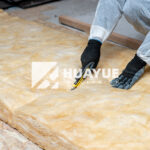
How to Cut Fiberglass Insulation Easily and Safely?
Nov 21, 2025
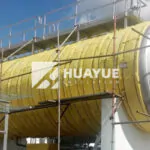
Does fiberglass insulation burn?
Nov 19, 2025
Let's Work Together
Ready to take your business to the next level? Get in touch with our team of experts and let's discuss how we can help you achieve your goals.
Get Free Solutions
